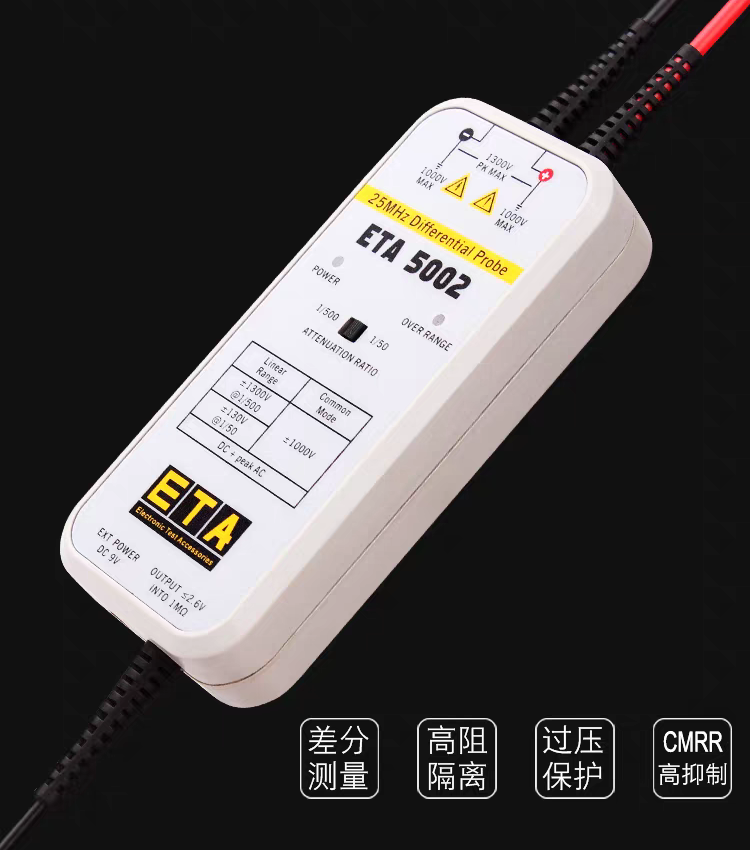Knowledge
Differential probe and ground voltage: break through the limitation of reference ground, realize safe and accurate measurement
When using a differential probe for electronic testing, "voltage to ground" is a concept that cannot be bypassed, but it is also a point that many practitioners are easily confused-clearly the differential probe tests the "differential voltage" (the difference between V and V-), why should we pay attention to the voltage to ground? What problems will be caused by too high a voltage to ground? How to correctly handle the relationship between the differential probe and the voltage to ground?
1. first clear: differential probe does not "directly measure" the voltage to ground, but by its profound influence
First of all, we must clarify a core cognition: the core test object of the differential probe is "differential voltage", not the ground voltage of a single signal terminal (V-to-ground, V-to-ground). However, this does not mean that the ground voltage has nothing to do with the differential probe-there must be a ground voltage at both ends of the "-" differential signal, and these ground voltages will affect the test of the differential probe in two ways: the 1 is to determine whether the probe will be "overvoltage damage", and the 2 is to affect the common mode suppression effect, thus interfering with the measurement accuracy of the differential voltage.
Simply put, the voltage to ground is the "background voltage" of the differential signal. Although the differential probe does not directly measure it, it needs to "adapt" to this background in order to accurately extract the useful differential voltage. For example, in the differential signal of an industrial equipment, the V-to-ground voltage is 220V, the V-to-ground voltage is 218V, and the differential voltage is 2V-at this time, the differential probe needs to be able to withstand the 220V-to-ground voltage while suppressing the 219V common mode-to-ground voltage ((220 218)/2) to accurately measure the 2V differential voltage; If the probe cannot withstand 220V voltage to ground, it will be directly damaged; if the common mode rejection capability is insufficient, the common mode voltage of 219V will be mixed into the differential signal, resulting in distortion of the test results.
2. key parameters: the "common mode voltage range" of the differential probe-the "safety red line" of the ground voltage"
In the specification of the differential probe, there is a core parameter directly related to the voltage to ground: the common mode voltage range (CMVR), which defines the "" "-" two ends of the differential probe relative to the ground can withstand the highest and lowest voltage to ground, is the "safety red line" of the voltage to ground ".
3. "invisible interference" to ground voltage: how does common mode voltage affect the measurement accuracy of differential voltage?
In addition to the 1 direct risk of "damage to the probe", the ground voltage (in the form of common-mode voltage) will also affect the measurement accuracy of the differential voltage through "common-mode interference"-even if the ground voltage is within the common-mode range, if the common-mode voltage is too large and the common-mode rejection ratio (CMRR) of the probe is insufficient, the test results will still be distorted.

